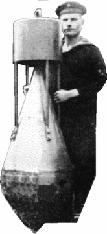-
There seems to be an uptick in Political comments in recent months. Those of us who are long time members of the site know that Political and Religious content has been banned for years. Nothing has changed. Please leave all political and religious comments out of the forums.
If you recently joined the forums you were not presented with this restriction in the terms of service. This was due to a conversion error when we went from vBulletin to Xenforo. We have updated our terms of service to reflect these corrections.
Please note any post refering to a politician will be considered political even if it is intended to be humor. Our experience is these topics have a way of dividing the forums and causing deep resentment among members. It is a poison to the community. We appreciate compliance with the rules.
The Staff of SOH
You are using an out of date browser. It may not display this or other websites correctly.
You should upgrade or use an alternative browser.
You should upgrade or use an alternative browser.
World War I, Balloons of War.
- Thread starter Blood_Hawk23
- Start date
Please post the HUD, I'd love to have it! 

Blood_Hawk23
Charter Member
HUD is Uploaded...
Well almost. Doing now.
I might do one for the Germans would almost look the same though. Oh a couple notes.
Heading indicator gets glitchy. I don't know why but some times the number readout for the airspeed will fade a bit depending on your direction. The pitch indicator couldn't have the wheels. the bitmap for that part of the gauge is too small. So it was either have a full size body and no wheels or have a tiny body. I went with the no wheels.
I take no credit for the original gauge set. I only changed the bitmaps in them.
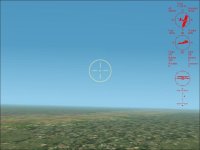

Well almost. Doing now.
I might do one for the Germans would almost look the same though. Oh a couple notes.
Heading indicator gets glitchy. I don't know why but some times the number readout for the airspeed will fade a bit depending on your direction. The pitch indicator couldn't have the wheels. the bitmap for that part of the gauge is too small. So it was either have a full size body and no wheels or have a tiny body. I went with the no wheels.
I take no credit for the original gauge set. I only changed the bitmaps in them.


Blood_Hawk23
Charter Member
Zeppelin Bomb Placement
So far I have only found one pic of bomb mounts on any of the Zeppelins. It shows them on an external rack along one of the cars.
In my DP I have them in the middle of the model. I want to do it atleast some what historic if possible. So should I space them out amongst the main cars, the engine cars or leave them in the middle.
If anyone finds a good pic please pass it along. I want to get the L-44 wrapped up.
So far I have only found one pic of bomb mounts on any of the Zeppelins. It shows them on an external rack along one of the cars.
In my DP I have them in the middle of the model. I want to do it atleast some what historic if possible. So should I space them out amongst the main cars, the engine cars or leave them in the middle.
If anyone finds a good pic please pass it along. I want to get the L-44 wrapped up.
CrisGer
Charter Member
A Seimens guided Zepplin bomb in 1918

Zepplin colour schemes
http://www.wingsofwar.org/forums/showthread.php?10940-Zeppelins-Rising
he mentions bomb "doors" so maybe some were housed inside the bag?
very intereseting and great detail about numbers of airships and even some that served on the EASTERN front, which i had not known..
http://www.theaerodrome.com/forum/aircraft/25387-zeppelin-mg-placement.html
i bet you could ask them about the bomb placement...
http://www.theaerodrome.com/forum/wwi-aviation/

L 43... involved in a remarkable coordinated attack on British Light Cruiser Squadron along with German submarines... bottom of page
http://alh-research.tripod.com/Light_Horse/index.blog?start=1237294859
L 49 captured in France...was source of essential data for Allies in their own development of air ships..

http://sped2work.tripod.com/zeppelins.html
excellent summary of German air war with air ships..including attack planned on New York by 3 special long distance ships...
Count Ferdinand von Zeppelin is considered by most to be the father of the dirigible. He was the first to take a powered machine to the air when Zeppelin I took off on July 2nd, 1900. Further development on lighter-than-air technology enabled the Count to built additional models, each more advance than the preceding one. Although design primarily as a commercial platform, it wasn’t long before the military began to realize the potential of the airship. In early 1909, the Army purchased two (Zeppelin I or Z.I and Z.II) units. Two additional samples were ordered in the fall. Not to be outdone, the Imperial Navy joined the fray and in 1912 ordered its first dirigible.
At the outbreak of hostilities in August 1914, the Imperial German Army possessed 10 operational airships. Nine of them Zeppelins, three of them DELAG units militarized and one Schutte-Lanz. Johann Schutte and Karl Lanz entered the airship-building industry in 1909 and began selling its platforms to the armed forces, mainly the Navy, in 1911. Four of those Zeppelins were assigned to the Western Front while three others took station on Prussia’s eastern frontier. The Navy’s sole sample, L.3, was posted on western Germany (Duren).
The Army was slow at recognizing the true power projection of the Zeppelin. In the beginning of the war, Army’s airships were use more as a low-level platform supporting the infantry crossing into Holland and Belgium. Because of its relative low operational range, British and French troops deployed in the Belgium frontier were able to shoot them down with some ease. In the first five weeks of the conflict, the German army lost 3 dirigibles. Before August ended, one more airship was lost at the Battle of Tannenberg in the eastern front. That left just 4 (3 army, 1 navy) units, including one Schutte-Lanz, available for operations.
That number (4) began to increase steadily after August ended. The Navy was the first to augment its fleet two-fold. On September 1st, the service received the first of the M-class of dirigibles, the L.4. Next January, the L.10 joined the ranks. Not to be outdone on September 3rd, the army placed an order for the newer Zeppelin P-class ship. With a hull of 531 feet, a gas capacity of 1,126,00 cubic feet and the addition of a fourth engine which gave it a top operational speed of 62 mph, the P version was the most advance airship in the world. Twenty two (22) Ps were purchased. The first to be delivered was the LZ.38, which officially became operational on April 3rd 1915. The rest of the units were incorporated to the service between May and July.
http://www.aeroflight.co.uk/military/german-airships-at-the-outbreak-of-war-1914.htm
very detailed photo of ship on this article.
First Zepplin to bomb London


Zepplin colour schemes
http://www.wingsofwar.org/forums/showthread.php?10940-Zeppelins-Rising
he mentions bomb "doors" so maybe some were housed inside the bag?
very intereseting and great detail about numbers of airships and even some that served on the EASTERN front, which i had not known..
http://www.theaerodrome.com/forum/aircraft/25387-zeppelin-mg-placement.html
i bet you could ask them about the bomb placement...
http://www.theaerodrome.com/forum/wwi-aviation/

L 43... involved in a remarkable coordinated attack on British Light Cruiser Squadron along with German submarines... bottom of page
http://alh-research.tripod.com/Light_Horse/index.blog?start=1237294859
L 49 captured in France...was source of essential data for Allies in their own development of air ships..

http://sped2work.tripod.com/zeppelins.html
excellent summary of German air war with air ships..including attack planned on New York by 3 special long distance ships...
Count Ferdinand von Zeppelin is considered by most to be the father of the dirigible. He was the first to take a powered machine to the air when Zeppelin I took off on July 2nd, 1900. Further development on lighter-than-air technology enabled the Count to built additional models, each more advance than the preceding one. Although design primarily as a commercial platform, it wasn’t long before the military began to realize the potential of the airship. In early 1909, the Army purchased two (Zeppelin I or Z.I and Z.II) units. Two additional samples were ordered in the fall. Not to be outdone, the Imperial Navy joined the fray and in 1912 ordered its first dirigible.
At the outbreak of hostilities in August 1914, the Imperial German Army possessed 10 operational airships. Nine of them Zeppelins, three of them DELAG units militarized and one Schutte-Lanz. Johann Schutte and Karl Lanz entered the airship-building industry in 1909 and began selling its platforms to the armed forces, mainly the Navy, in 1911. Four of those Zeppelins were assigned to the Western Front while three others took station on Prussia’s eastern frontier. The Navy’s sole sample, L.3, was posted on western Germany (Duren).
The Army was slow at recognizing the true power projection of the Zeppelin. In the beginning of the war, Army’s airships were use more as a low-level platform supporting the infantry crossing into Holland and Belgium. Because of its relative low operational range, British and French troops deployed in the Belgium frontier were able to shoot them down with some ease. In the first five weeks of the conflict, the German army lost 3 dirigibles. Before August ended, one more airship was lost at the Battle of Tannenberg in the eastern front. That left just 4 (3 army, 1 navy) units, including one Schutte-Lanz, available for operations.
That number (4) began to increase steadily after August ended. The Navy was the first to augment its fleet two-fold. On September 1st, the service received the first of the M-class of dirigibles, the L.4. Next January, the L.10 joined the ranks. Not to be outdone on September 3rd, the army placed an order for the newer Zeppelin P-class ship. With a hull of 531 feet, a gas capacity of 1,126,00 cubic feet and the addition of a fourth engine which gave it a top operational speed of 62 mph, the P version was the most advance airship in the world. Twenty two (22) Ps were purchased. The first to be delivered was the LZ.38, which officially became operational on April 3rd 1915. The rest of the units were incorporated to the service between May and July.
http://www.aeroflight.co.uk/military/german-airships-at-the-outbreak-of-war-1914.htm
very detailed photo of ship on this article.
First Zepplin to bomb London

CrisGer
Charter Member

L 65 special height climber long distance ship desiged for raid on New York.

showing tail detail..

LZ 97
http://www.worcestershireregiment.com/wr.php?main=inc/vc_w_l_robinson_page5
background on British efforts to shoot down zepplins.
L 31
AER_DaddyO
SOH-CM-2025
John,
Regarding the bomb placement on the Zeppelins: Google search "pclass_description.pdf" [w/o the quotation marks]. It should list a copywrited pdf file which indicates that the bombs on a P-Class Zep were stored internally, and dropped through conventional bomb bay doors located on the keel. Looks very similar to a WW2 bomber setup. There is no info on the racks themselves, or if the bombs were loaded vertically or horizontally.
Hopefully this will help a little, on your very worthwhile project.
Regards, AER_DaddyO
"Don't just stand there...get one up!"
Regarding the bomb placement on the Zeppelins: Google search "pclass_description.pdf" [w/o the quotation marks]. It should list a copywrited pdf file which indicates that the bombs on a P-Class Zep were stored internally, and dropped through conventional bomb bay doors located on the keel. Looks very similar to a WW2 bomber setup. There is no info on the racks themselves, or if the bombs were loaded vertically or horizontally.
Hopefully this will help a little, on your very worthwhile project.
Regards, AER_DaddyO
"Don't just stand there...get one up!"
Blood_Hawk23
Charter Member
Finding actual info is tough. I've gotten use to it. Finding 100 year old info online is a PIA.
Thank You for the replies.
I think I'll mix it up a bit. That will allow a better spread.
Finn,
That pic is one I used to model the 300kg Carbonit Bombs. The info I found on bomb types many mentions the Carbonit, and in later Army Zeps the PUWs. All ranging in size from the 10kg to 500kg. Thats both types included.
The L-44 was a Navy Zeppelin, I think. I'll have to double check. I'm doing a skin for the L-45 (or is it 54) with the Black Night Raider paint. I believe that is the Army Zep. I could be wrong on both accounts.
So I have the finial go ahead. It will take me most of the week to finish putting everything together. So keep your Eyes open. The Zeppelin Raiders are coming.
Till Later,
John
Thank You for the replies.
I think I'll mix it up a bit. That will allow a better spread.
Finn,
That pic is one I used to model the 300kg Carbonit Bombs. The info I found on bomb types many mentions the Carbonit, and in later Army Zeps the PUWs. All ranging in size from the 10kg to 500kg. Thats both types included.
The L-44 was a Navy Zeppelin, I think. I'll have to double check. I'm doing a skin for the L-45 (or is it 54) with the Black Night Raider paint. I believe that is the Army Zep. I could be wrong on both accounts.
So I have the finial go ahead. It will take me most of the week to finish putting everything together. So keep your Eyes open. The Zeppelin Raiders are coming.
Till Later,
John
Blood_Hawk23
Charter Member
It was both
Both the L-45 and L-54 had the Black paint.
Here is a site to look at:
http://www.zeppelin-museum.dk/D/german/historie/zeppelin/zeppelin.html
you will have to translate the page unless you can read German.
It seems my facts are a tad bit of in the whole Army Navy thing. The paint was used by either Army or Navy and was not limited to one or the other.
The Paint of the night Raiders is correct. as is the Bombs used, The L-44, L-45, and L-54 were all Navy.
Both the L-45 and L-54 had the Black paint.
Here is a site to look at:
http://www.zeppelin-museum.dk/D/german/historie/zeppelin/zeppelin.html
you will have to translate the page unless you can read German.
It seems my facts are a tad bit of in the whole Army Navy thing. The paint was used by either Army or Navy and was not limited to one or the other.
The Paint of the night Raiders is correct. as is the Bombs used, The L-44, L-45, and L-54 were all Navy.
CrisGer
Charter Member
Please give us the alterntiave of a black skin which WAS used on the height climbers and a gray one which was used on the naval zepplins for sure earlier in the war. When the fleet became essentially inactive it probably changed but a gray skin would be very nice to have as an alternative. thanks for the great work.
bearcat241
SOH-CM-2023
Vertical takeoffs and landings for airships
Has anyone experimented with using helo flight dynamics in these airships. In theory, a two-prop Chinook helo config with greatly expanded blade radii might solve the hover problems and mitigate hover balance issues as well. Might be able to take advantage of this leftover FS2000 code in the sim. Just a thought....
Has anyone experimented with using helo flight dynamics in these airships. In theory, a two-prop Chinook helo config with greatly expanded blade radii might solve the hover problems and mitigate hover balance issues as well. Might be able to take advantage of this leftover FS2000 code in the sim. Just a thought....
Last edited:
Blood_Hawk23
Charter Member
Has anyone experimented with using helo flight dynamics in these airships. In theoretically, a two-prop Chinook helo config with greatly expanded blade radii might solve the hover problems and mitigate hover balance issues as well. Might be able to take advantage of this leftover FS2000 code in the sim. Just a thought....
Bearcat,
I haven't tried a Chinook type helo. If you'd like to try I'll send you a copy. Otherwise regular Helos are out of the question. At any rate it will only work for the Player's air and CFG files.
They still can not land do to issues with the length of the landing gear. The sim can not handle it. Allen and I must have tried 50 different ways.
Cris,
The Pics I posted are the textures you will be getting. I'm doing a Black and Yellow (more like a tan then yellow) texture.
I'm wraping up the MB doc and Readme. Then I will finish the DP. Once those are done I'll be ready to upload. It won't be before this weeked. I'm working OT the next three nights.
Blood_Hawk23
Charter Member
Just so everyone can see how the textures will look...
http://www.wingsofwar.org/forums/showthread.php?10940-Zeppelins-Rising
It will be like the one it the back.
This is a neat site for any of you who like table top gaming.
http://www.wingsofwar.org/forums/showthread.php?10940-Zeppelins-Rising
It will be like the one it the back.
This is a neat site for any of you who like table top gaming.
CrisGer
Charter Member
I appreciate all of the hard work you have put into this.
I will continue to use the L 44 i have then for the naval model as it clearly was NOT black in the early stages of the war but a silvery gray..and that is the main one at this point I am interested in but it will be great to have a model with the great improvements you have made very nicely done!
the work you are doing is very impressive and really enhances the Zepplin to be able to operate as both AI and controlled. really wonderful to have. Now we can make Zep bombing missions with all of the great london enhancments. btw, i found a great set of pics of the Zepplin sheds, was not sure if we have the sheds in the library yet, someone was working on them years ago but i was out of touch.

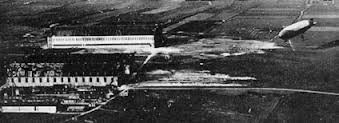
I will continue to use the L 44 i have then for the naval model as it clearly was NOT black in the early stages of the war but a silvery gray..and that is the main one at this point I am interested in but it will be great to have a model with the great improvements you have made very nicely done!
the work you are doing is very impressive and really enhances the Zepplin to be able to operate as both AI and controlled. really wonderful to have. Now we can make Zep bombing missions with all of the great london enhancments. btw, i found a great set of pics of the Zepplin sheds, was not sure if we have the sheds in the library yet, someone was working on them years ago but i was out of touch.


Last edited:
UncleTgt
SOH-CM-2025
Cris,
Allen did the sheds at Tondern
http://www.sim-outhouse.com/sohforums/local_links.php?action=jump&catid=45&id=16623
Allen did the sheds at Tondern
http://www.sim-outhouse.com/sohforums/local_links.php?action=jump&catid=45&id=16623

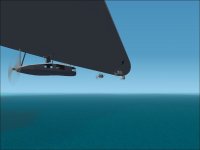
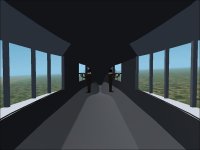
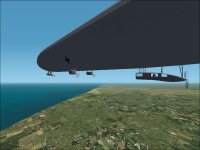
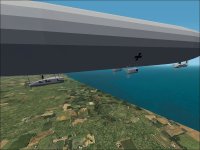
.jpg)

